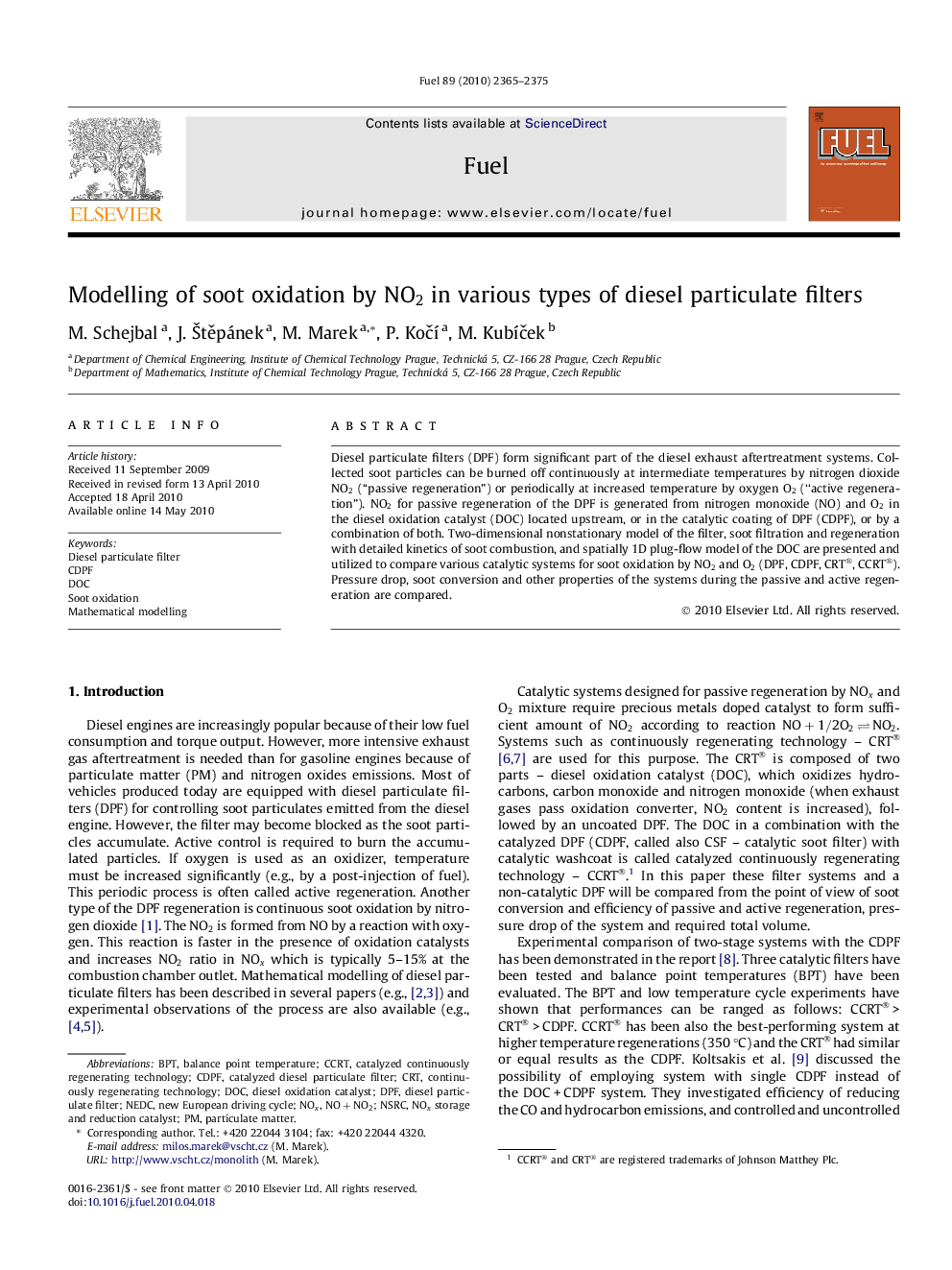| Article ID | Journal | Published Year | Pages | File Type |
|---|---|---|---|---|
| 207066 | Fuel | 2010 | 11 Pages |
Diesel particulate filters (DPF) form significant part of the diesel exhaust aftertreatment systems. Collected soot particles can be burned off continuously at intermediate temperatures by nitrogen dioxide NO2NO2 (“passive regeneration”) or periodically at increased temperature by oxygen O2O2 (“active regeneration”). NO2NO2 for passive regeneration of the DPF is generated from nitrogen monoxide (NO) and O2O2 in the diesel oxidation catalyst (DOC) located upstream, or in the catalytic coating of DPF (CDPF), or by a combination of both. Two-dimensional nonstationary model of the filter, soot filtration and regeneration with detailed kinetics of soot combustion, and spatially 1D plug-flow model of the DOC are presented and utilized to compare various catalytic systems for soot oxidation by NO2NO2 and O2O2 (DPF, CDPF, CRT®, CCRT®). Pressure drop, soot conversion and other properties of the systems during the passive and active regeneration are compared.
